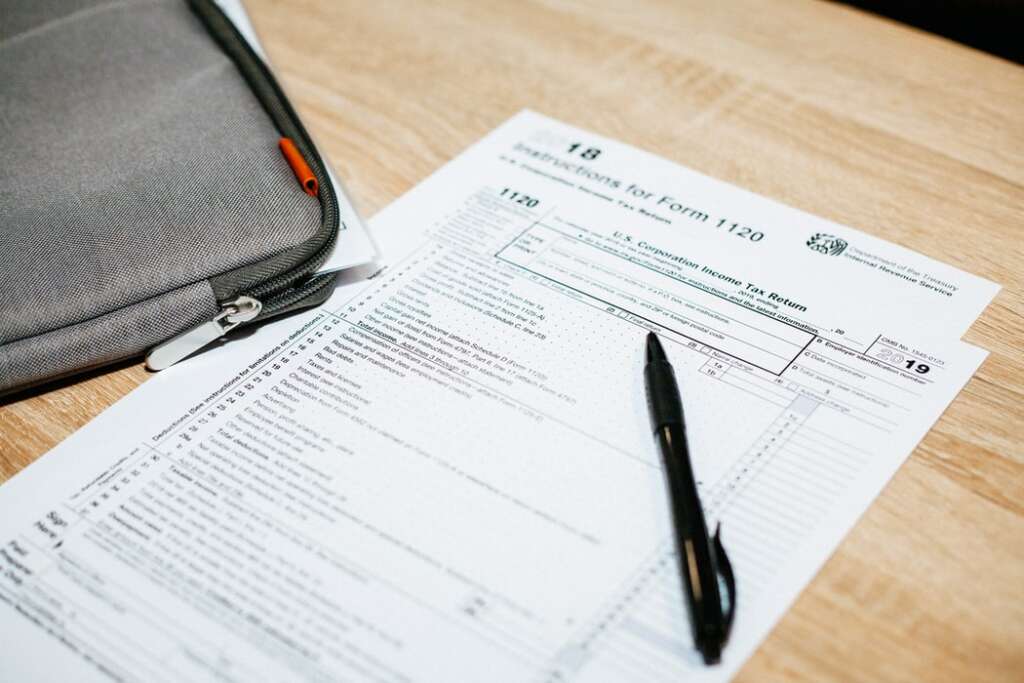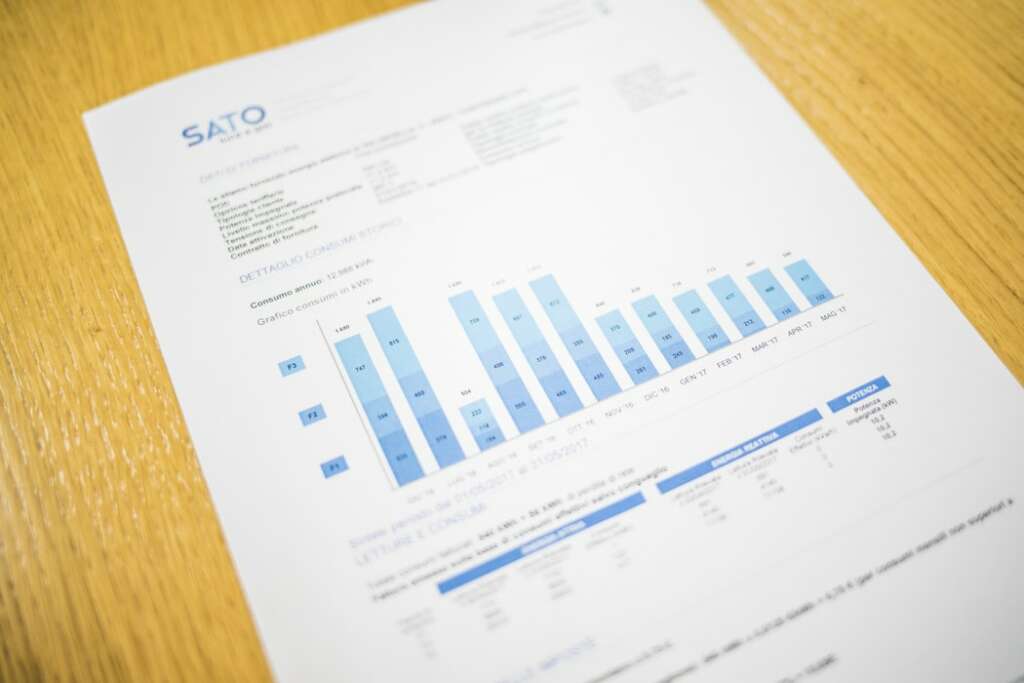EOFY tips for your tax plan
The financial year is almost over, but there are still effective strategies you may be able to put in place.
The aim is to make sure you pay no more tax than you have to for the 2020-21 year and maximise any refunds you may be entitled to. This is still the case, if not more so, in the on-going COVID-19 environment.
While the best strategies are adopted as early as possible in a financial year and not at the end, it’s worth remembering proper tax planning is more than just sourcing bigger and better deductions. The best tips involve assessing your current circumstances and planning your associated income and deductions from income year to income year.
Not all of the following tips will suit everyone’s specific circumstances, but they should provide a list of possibilities that may get you thinking along the right track for your tax planning.
Temporary full expensing
The temporary full expensing regime is now operable for depreciating assets acquired after 6 October 2020 and before 30 June 2022. The full cost of acquiring depreciating assets is deductible in the year of income in which the asset is first held, provided the item is first used, or installed ready for use, by 30 June 2022.
The cost of improvements made to a depreciating asset is also deductible in the year of income the improvements are made (no later than 30 June 2022). In contrast to the instant asset write-off rules, there is no upper limit on the amount that can be fully deducted in respect of any asset.
This may enable some effective tax planning between the 2021 and 2022 tax years where there are assets you have been looking to acquire or improve.
Use the CGT rules to your advantage
If you have made and crystallised any capital gain from your investments this financial year (which will be added to your assessable income), think about selling any investments on which you have made a loss before 30 June. Doing so means the gains you made on your successful investments can be offset against the losses from the less successful ones, reducing your overall taxable income.
And while there may be many opportunities to realise capital losses in the current circumstances, you should be aware that the deliberate realisation of capital losses for the purpose of reducing capital gains in some circumstances may trigger a response from the ATO.
Keep in mind that for CGT purposes a capital gain generally occurs on the date you sign a contract, not when you settle on a property purchase or share transaction. When you are making a large capital gain toward the end of an income year, knowing which financial year the gain will be attributed to can be a handy tax planning advantage.
Of course, tread carefully and don’t let mere tax drive your investment decisions – but check to determine whether this strategy will suit your circumstances, and whether you risk attracting the attention of the ATO in any way.
Investment property
Expenses stemming from your rental property can be claimed in full or in part, so, if possible, it can be helpful to bring forward any expenses that can be undertaken before June 30 and claim them in the current financial year. If you know that your investment property needs some repairs, some gutter clean up or some tree lopping, for example, see if you can bring the maintenance and (deductible) payments into the 2020-21 year.
It should also be noted that deductible rental property expenses remain deductible even if the property is not rented as long as it is genuinely available for rent (which is relevant in the current COVID-19 environment).
Pre-pay investment loan interest
If you have some spare cash, then see if you can negotiate with your finance provider to pay interest on borrowings upfront for the investment property or margin loan on shares (or other loan types) and make that deduction available this year. Most taxpayers can claim a deduction for up to 12 months ahead. But make sure your lender has allocated funds secured against your property correctly, as a tax deduction is generally only allowed against the finance costs incurred for the purpose of earning assessable income from investments.
Be aware that a deduction may not be available on funds you redraw from a loan of this type that is put to other purposes. Also, a component of the National Rental Affordability Scheme payment is not assessable income and therefore the deduction on these properties may need to be apportioned.
Bring forward expenses / defer income
Try to bring forward any other deductions (like the interest payments mentioned above) into the 2020-21 year. If for instance you know that next income year you will be earning less (for example, due to maternity or partner leave or going part-time), then you will be better off bringing forward any deductible expenses into the current year.
An exception will arise if you expect to earn more next financial year. In that case it may be to your advantage to delay any tax-deductible payments until next financial year, when the financial benefit of deductions could be greater. Tax planning is the key, as your personal circumstances will dictate whether these measures are appropriate.
It’s probably leaving it a bit late to adopt this strategy now, but you could consider a tactic that can take advantage of this sort of timing and place money into a term deposit that matures after 30 June 2022. Then interest will form part of your taxable income in the following tax year.
Again, this type of strategy may be invaluable if you are anticipating less or more income next year as a result of some of the more longer-term effects of COVID-19 on the economy.
Final reminders
You can claim up to $300 of work-related expenses without receipts, provided the claims are reasonable for outgoings related to earning assessable income. If the total amount you are claiming is $300 or less, you need to be able to show how you worked out your claims, but you do not need written evidence.
No-one knows your affairs better than yourself, so you will recognise if any of the above tax tips applies to your circumstances. But no-one is better informed as to what is appropriate, or indeed allowable, than your tax agent (and don’t forget, any fee is an allowable deduction in the year it is paid).
Every individual taxpayer is required to lodge their return before October 31, but tax professionals are generally given more time to lodge, which can be a handy extension to a payment deadline if any arises.
Of course, if you’re sure you are going to get a refund there is no use delaying, so in these cases it is worth getting all of your information in and your return lodged as soon as you can after July 1 – especially if the value of a refund is important for your circumstances.

Dealing with excess before-tax super contributions
Making extra before-tax contributions into super (called concessional contributions) can help boost a person’s retirement savings. But fund members need to be aware of the implications for when they exceed the concessional contributions cap.
Since 2013-14, when the excess concessional contributions refunding scheme came into effect, individuals exceeding their concessional contribution cap will accrue a tax liability.
The excess concessional contribution (CC) amount will be added to the individual’s assessable income for the relevant year and taxed at their marginal tax rates plus an excess CCs charge (as explained below).
The individual will, however, be entitled to a 15% non- refundable tax offset to compensate for the tax already paid by their fund(s) on the same excess amount.
The ATO will determine whether there are any excess CCs once the individual’s fund has finalised its reporting requirements and the individual has lodged their personal tax return for the relevant income year.
Upon exceeding their CCs cap, the individual will receive an excess CC determination from the ATO advising them that their excess CCs amount has been included as assessable income in their tax return. Together with the determination, the ATO will issue the individual with an income tax return notice of assessment or notice of an amended assessment.
Case study
■ Greg is 54 years old and subject to a marginal tax rate of 34.5% (including the Medicare levy).
■ Greg’s only superannuation interest is in his self-managed superannuation fund (SMSF). His total superannuation balance (TSB) on 30 June 2019 was $1.8 million.
■ Greg had super guarantee (SG) and personal deductible contributions totalling $30,000 in CCs made into his SMSF during 2019-20.
■ Greg’s CCs cap for 2019-20 was $25,000, giving him an excess CCs of $5,000.
■ The total CCs amount of $30,000 is reported to the ATO as part of the super fund’s 2019-20 annual return.
■ Greg lodges his personal income tax return for 2019-20 on 31 August 2020 and receives a notice of assessment with payment due 21 September 2020.
■ However, the ATO determines that Greg has exceeded his CCs cap for 2019-20 by $5,000.
On 1 November 2020, it issues Greg with an excess CCs determination and amended notice of assessment with payment due on 21 December 2020.
First, the CCs (totalling $30,000) would be included in the SMSF’s assessable income for 2019-20 and taxed at 15% (that is $4,500).
Secondly, the ATO would add the excess CCs of $5,000 to Greg’s assessable income for 2019-20 and recalculate his income tax for that year allowing for a 15% tax offset to reflect the tax already paid by the SMSF. This gives Greg the following tax liability: $5,000 taxed at a marginal tax rate of 34.5% ($5,000 x 34.5% = $1,725). Less 15% tax offset ($5,000 x 15% = $750).
Total $975.
EXCESS CONCESSIONAL CONTRIBUTION CHARGE
When an individual has their tax payable increased due to having their excess CCs included in their assessable income, they will also have to pay an excess CC charge (essentially an interest charge) that applies to the extra tax liability. The excess CC charge:
■ applies from 1 July in the year in which the excess contribution was made until the day before the individual is due to pay their income tax liability under their first assessment notice for that income year
■ is calculated by the ATO and compounded daily at a rate equal to the 90-day bank accepted bill (as published by the Reserve Bank of Australia) plus a 3% uplift factor.
■ is contained (along with the period and rate of the excess CCs charge) in the excess CC determination received by the individual from the ATO, and
■ is not a deductible expense and the ATO cannot exercise its discretion to remit it.
Following on from Greg’s scenario earlier, the excess CC charge will apply to his extra tax liability amount of $975 (not the full $5,000 excess CCs) from 1 July 2019 to 20 September 2020 (being the day before tax is due to be paid under his first notice of assessment).
SHORTFALL INTEREST CHARGE
An individual’s tax liability may also increase by the shortfall interest charge (SIC) that applies to the shortfall between the amount of tax the individual paid originally, and the amount of extra tax identified in their amended tax return (which includes the excess CCs and applicable 15% tax offset).
The SIC rates are the same as the excess CC charge, and is applied to the shortfall amount from the time the original tax liability was payable until the day before the extra tax liability related to the amended assessment for the excess CCs is due. The SIC is charged on the total of the extra tax payable due to excess CCs, plus the amount of the excess CC charge.
In Greg’s case, Greg may need to pay the SIC on the extra income tax liability of $975 plus the excess CC charge amount. Many taxpayers seem to be unaware of the SIC until they receive an amended assessment from the ATO.

The SME Recovery Loan Scheme is now open
Loans for small to medium enterprises (SMEs) are available until 31 December 2021 under the Federal Government’s SME Recovery Loan Scheme. The scheme is designed to support the economic recovery, and to provide continued assistance, to firms that received JobKeeper and also to businesses that are flood-affected.
Treasury says the scheme aims to enhance lenders’ ability to provide cheaper credit, allowing many otherwise viable SMEs to access vital additional funding to get through the impact of COCID-19 and to recover and prepare for the future. The Federal Government aims to work with lenders to ensure that eligible firms have access to finance, with actions such as offering a guarantee.
The scheme builds on the framework established in the two phases of the Coronavirus SME Guarantee Scheme, and is only open to recipients of the JobKeeper payment between 4 January 2021 and 28 March 2021 as well as businesses that were located or operating in eligible flood affected local government areas (LGAs) in March 2021.
Phase 2 of the existing SME Guarantee Scheme will remain open to eligible borrowers until 30 June 2021, and SMEs with phase 1 or phase 2 loans will be able to apply for SME Recovery Loan Scheme loans provided they meet eligibility criteria. Businesses that access other disaster-related financial assistance will be able to apply for loans under the SME Recovery Loan Scheme, on the condition that they meet eligibility criteria.
ELIGIBILITY
The scheme is only open to SMEs with a turnover of up to $250 million that were recipients of the JobKeeper payment between 4 January 2021 and 28 March 2021 or were affected by the floods in eligible LGAs in March 2021. Both self-employed individuals and non-profit businesses are eligible.
Businesses that have accessed loans in phase 1 and phase 2 can also apply for loans under the scheme.
KEY FEATURES
Participating lenders are offering guaranteed loans on the following terms under the SME Recovery Loan Scheme:
■ The Federal Government guarantee will be 80% of the loan amount.
■ Lenders are allowed to offer borrowers a repayment holiday of up to 24 months.
■ Loans can be used for a broad range of business purposes, including to support investment. Loans may be used to refinance any pre-existing debt of an eligible borrower, including those from the SME Guarantee Scheme.
■ Borrowers can access up to $5 million in total, in addition to the phase 1 and phase 2 loan limits.
■ Loans are for terms of up to 10 years, with an optional repayment holiday period.
■ Loans can be either unsecured or secured (excluding residential property).
■ The interest rate on loans will be determined by lenders, but will be capped at around 7.5%, with some flexibility for interest rates on variable rate loans to increase if market interest rates rise over time.
All big four banks have released loan offerings based on the scheme. Ask this office for other essential information.

Evidencing SMSF property valuations
The ATO recently clarified the evidence that is required to support real property valuations within SMSFs, particularly in light of the unique challenges brought about by COVID-19.
Under SMSF regulations, assets must be valued at market value in an SMSF’s accounts and financial statements each year. SMSF auditors need to be in possession of sufficient appropriate audit evidence to support the value of a fund’s investments.
It’s worth noting that in 2018, the most common contravention identified by auditors and referred to ASIC was about such valuations. Before a change to regulations in July 2012, the compliance burden was less onerous; fund assets were only required to be valued every three years (except where the fund was paying a pension or it held in-house assets).
THE ATO’S CLARIFICATION
In October 2020, the ATO updated its website clarifying the objective and supportable evidence needed to support real property valuations. The ATO listed the following examples of various items it considered may be useful:
■ independent appraisals from real estate agents (ie, kerb side valuations)
■ sales contract (provided the purchase is recent and no events have occurred to the property that could materially impact its value since the purchase, such as perhaps a global pandemic or natural disaster)
■ recent sales of comparable property in the area
■ rates notices — provided they are consistent with other evidence on valuation
■ net income yield of commercial properties. (The ATO notes, however, that this on its own is not sufficient and is only appropriate where tenants are unrelated.)
EXTERNAL VALUATIONS
It’s important to note that an external valuation using a qualified independent valuer is not required in the normal course of events (but would obviously assist). However, a trustee should consider an external valuation where the property represents a significant proportion of the fund’s value. Expert valuations should also be considered where an event has occurred, such as a natural disaster, which may significantly alter the property’s value.
Where an external, expert valuation is not used, objective and supportable evidence must form the basis of the valuation each year.
The evidence should also be contemporaneous. That is, it should as much as possible support an end of year 30 June valuation. This is particularly the case where the market is volatile. Perhaps the take-away point with supporting evidence, is that it should be a mix of relevant material that the auditor is furnished with, rather than a single item listed above.
Although not listed in the ATO’s October communique, in the past few years there has been a rise of online valuation providers. The ATO has stated that a valuation from this source would also be acceptable.
MARKET VALUE
For background, market value in relation to real property and other SMSF assets means the amount that a willing buyer of the asset could reasonably be expected to pay to acquire the asset from a willing seller. Generally, the ATO will accept a fund’s determination of market value where:
■ it does not conflict with the “Valuation guidelines for SMSFs” (available on the ATO’s website)
■ there is no evidence that a different value was used for any corresponding CGT event, and
■ it was based on “objective and supportable data”.
AUDITOR ROLE
To be clear, it’s not the auditor’s job to undertake a valuation. Rather, it is the trustee’s responsibility to provide their auditor with the documents that are requested to support the market valuation of SMSF assets, including real property.
The auditor should seek evidence that shows how the asset was valued, including the method used and the data on which the valuation was based. On the property front, although real property investments are generally less susceptible to short-term market volatility compared with shares or certain other financial instruments, values can nonetheless fluctuate significantly in the short-term.
This is particularly the case when the economy experiences an unexpected shock, such as that brought about by COVID-19.
COVID-19 IMPACTS
For SMSFs that hold real property, COVID-19 and the accompanying government restrictions have made accurate valuations more difficult. Some investors are holding off purchasing property as they wait to understand the full fallout of the pandemic.
The pandemic resulted in some business failure among real estate agencies, and hence made it more difficult to obtain supporting valuation evidence, including relevant comparisons. Aside from the economic impacts of COVID, government-imposed lockdowns throughout 2020 resulted in many auctions being abandoned and in-person inspections limited or banned. All told, the auditor’s job became more difficult.
The assumptions underpinning the value of various property types are also being challenged by the impacts of COVID-19, making property valuations even more difficult. For instance, stay-at-home orders requiring firms to work remotely may have led to tenants re-evaluating their need for large office space when their lease next comes up. Demand for this style of property may fall away. The value of accommodation facilities (given international travel restrictions), casinos and CBD carparks may also be more difficult to gauge.
RISKS FOR AUDITORS
Auditors face significant potential exposure where they sign-off without sufficient valuation evidence. In one case, the auditor was ordered by the New South Wales Supreme Court to pay more than $2 million in damages stemming from valuation errors. An investment strategy was in place, but the auditor failed to check that the investments were in line with the strategy. As it turned out, the bulk of the unlisted investments were worthless or of substantially compromised value.
The procedures for auditors have not been relaxed for COVID-19. If an auditor is not satisfied of the market value of the real property, they should qualify the financial and compliance report sections of the SMSF independent auditor’s report advising they have been unable to obtain sufficient appropriate audit evidence on the value of the real property.
Without this evidence to verify the value of the real property, the auditor must use their professional judgement to determine whether an auditor/actuary contravention report (ACR) should also be lodged. The ACR should include the reasons why the trustee was unable to obtain the appropriate evidence.
In short, despite the obstacles COVID-19 has thrown up, the compliance rules and procedures for auditors have not changed when it comes to dealing with the valuation of SMSF real property.
TRUSTEE CONCESSIONS
However, in acknowledging the effects of COVID-19, the ATO extended leniency to SMSF trustees. While the ATO has stopped short of providing trustees with a complete COVID-19 “get out of jail free” card when it comes to breaches of valuation regulations, the ATO will be flexible.
During both the 2019-20 and 2020-21 years, if the trustee has difficulty obtaining supporting property valuation evidence due to COVID-19 and this results in the lodgment of an ACR, the contravention will not incur penalties.
Instead the trustee will receive a letter from the ATO advising them to ensure they comply with the ATO’s valuation guidelines and have supporting valuation evidence by the time of their next audit if possible. Repeated contraventions will likely lead to penalties.
TAKE-HOME MESSAGES
It falls to the trustees to provide the auditor with objective and supportable evidence to value SMSF real property (and of course assets within the fund).
Where an expert valuation is not obtained, trustees should provide the auditor with the type of evidence listed by the ATO. This should involve a range of these items, not just one.
While the impacts of COVID-19 may make attaining reliable valuation evidence more difficult, the auditor’s role has not changed. Contraventions must be dealt with in the usual way. However, the ATO may extend leniency to trustees during the current and previous financial year.

Independent audit review for small businesses
From 1 April 2021, the ATO’s independent review service has been made permanently available for eligible small businesses with a turnover less than $10 million. The service provides an additional option to achieve early and fair resolution of an audit dispute.
The service was locked in after a successful pilot period and consultation with the business community. Disputes covered by this service include:
■ income tax
■ GST
■ excise
■ luxury car tax
■ wine equalisation tax
■ fuel tax credits.
All independent reviews are conducted by an ATO officer who has not had any prior involvement in the audit.
Requesting a review does not affect objection rights. Eligible small businesses who have an audit in progress will be offered the opportunity to request an independent review.


